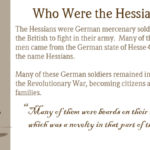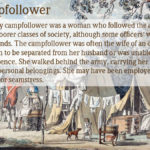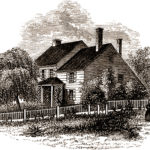On September 11, 1777, the hamlet of Chadds Ford played host to one of the largest and deadliest battles of the American Revolutionary War, today called the Battle of Brandywine. An estimated 29,000 British and American troops gathered at the fledgling town populated mostly by peaceful Quakers.
Britain’s campaign for 1777 was to split off New England from New York, obtain and hold western and northern New York, and take Philadelphia. This last objective was assigned to the Commander-in-Chief of the British army in America, Sir William Howe. Howe believed that the capture of Philadelphia, capital of the nation and a major supply center, would demoralize the Americans and ensure his victory over them.
Accordingly, in July of 1777, Howe and his army sailed 264 ships south toward Philadelphia from their encampment in New Jersey. As they approached the city, however, Howe was informed of American fortifications and a small navy force in and along the Delaware River, blocking his path. He changed course to the Chesapeake Bay, planning to land at Elk Ferry (about 8 miles below the present Elkton, Maryland) and march his 4,000 to 5,000 German Hessians and 11,000 to 13,000 British troops thirty miles northeast to Philadelphia.
An express came in, which brings an account that the English are landed about 4 miles below the Head of Elk, but where they mean to march to we remain in a state of painful suspense about, anxious to know, yet almost afraid to hear lest our wishes should not be answered.~Sarah Logan Fisher, August 26, 1777
Opposing him was General George Washington, Commander-in-Chief of the American (or Continental) army. He had won two winter engagements over British outposts at Trenton and Princeton on December 26, 1776, and January 3, 1777, then had moved his army into quarters near Morristown, New Jersey. He had spent the summer of 1777 encamped in the secure Watchung Mountains of New Jersey, descending to skirmish with the British.

General George Washington and the Marquis de Lafayette at the Battle of Brandywine by John Vanderlyn
In July, when he learned of Howe’s movement southward, Washington marched his own 11,000 man force south to Wilmington, Delaware, arriving on August 25th. Howe landed the same day at Elk Head. By September 3, the majority of Howe’s army, recovered from malnutrition suffered during the month-long sail, started marching toward Philadelphia. The next five days saw the two armies positioning themselves along the White Clay Creek, west of Newport and Wilmington, but neither general engaged. Washington expected Howe to march toward him in Wilmington as the city was situated between Howe at Elk Head and his destination of Philadelphia. Howe, however, preferred to meet the rebel force elsewhere, thus preventing Washington from making use of the advantageous ground he occupied there. He feinted north towards Pennsylvania, forcing Washington to change his defensive ground. The latter chose the Brandywine River in Chadds Ford. The Continentals reached the Brandywine on the 9th and camped on its east side. There they prepared to make a stand.
Washington positioned his troops on the high ground east of the Brandywine River, a natural barrier and an excellent defensive position with advantageous high ground behind and thickly wooded slopes offering concealment. He positioned brigades and regiments at the main fords (shallow places where an army could cross), including Buffington’s Ford (about a mile above today’s bridge at Lenape), Chadds Ford, and Pyle’s Ford (south of Route 1). One advisor counseled that Howe would try to outflank them by sending his main force northward while a decoy force attacked at Chadds Ford. Washington was aware of this possibility, but had been assured by local informants that Jefferis’ Ford, the next ford above Buffington’s, was difficult to cross, because it was very deep, more than half the height of a man, and that the road southward was poor. Washington, therefore, expected the British to cross at Chadds Ford and, accordingly, put the strength of his army there.

Battle of Brandywine Map, George W. Boynton (Engraving) – Sparkes, Jered The Life of George Washington Boston Tappen & Dennet 1843 The Cooper Collections of American History, Wiki Commons.
Howe, however, had indeed decided to repeat the flanking strategy he had used successfully at Long Island. He sent half his army, about an 8,000 man troop, straight to Washington at Chadds Ford to act as decoy. This force was led by Hessian general Wilhelm von Knyphausen who had a company of men equipped with the new rapid-firing breech-loading rifles invented by Patrick Ferguson. The rest of Howe’s army marched north 17 miles to cross the Brandywine above the fords that Washington guarded. Howe then marched south, down what is today Birmingham Road, to launch a surprise attack on the right flank of Washington.

Nation Makers by Howard Pyle depicts a scene from the Battle of Brandywine. The painting hangs in the Brandywine River Museum.
Washington had been receiving conflicting reports throughout the morning about the location of Howe’s army. Was there British troop movement near Jefferis’ Ford? Had Howe indeed split his army? Or was the force united and preparing for a full frontal assault? He considered crossing the river to launch an assault on Von Knyphausen but held off. He didn’t receive a reliable report until early afternoon, too late. The British were marching toward Birmingham Friends Meeting House. The Continentals scrambled to reform themselves to meet this attack, attempting to take the high ground behind the meeting house.

American battery firing on British Foot Guards as the British begin their attack on General Sullivan’s Division at the Birmingham Friends Meeting House. Battle of Brandywine Creek on 11th September 1777 in the American Revolutionary War by Lord Cantelupe, present at the battle as an officer of the Coldstream Guards.
Their line not completely formed, the Continentals fell back, leaving behind their dead and wounded along with various pieces of equipment and artillery. Fighting continued until dusk, by which time ammunition was running low or was completely gone. Washington’s army retreated to Chester, twelve miles east, in good spirits despite the defeat, which they attributed to bad intelligence reports rather than to a lack of fighting skill on their part. “Notwithstanding the misfortune of the day, I am happy to find the troops in good spirits, and I hope another time we shall compensate for the losses now sustained,” Washington wrote to Congress. On September 12th, Washington issued orders for the troops to press on to Germantown.
The victory was ours, and the ground the enemy’s.~Major William Willcox
The exhausted British did not pursue the Americans through the night, but remained behind, camping on the battlefield, and treating the wounded and burying the dead.
Casualties on both sides appear to have been heavy, although battle reports of the day and modern estimates vary. About 300 Americans were taken prisoner, 400 to 800 killed, and 600 to 800 wounded. British losses were heavier–somewhere between 600 to 2,000.
During the five days following the battle, the British camped in the area from Dilworthtown to the present day Brandywine Battlefield Park, and ransacked Chadds Ford houses and properties, looting books, furnishings, livestock, food, clothing, and money. They then moved north toward Paoli and marched into Philadelphia on September 26th. They occupied the city throughout the winter while the American army languished at Valley Forge.
Although the Battle of Brandywine receives scant attention in the annals of military history, it is significant as one of the largest land battles, as the only battle in which Washington and Howe fought head to head, as a great morale booster for the American army, and is thought to be one of the first battles in which the Ferguson rifle was used and in which the Betsy Ross flag was flown.
Further Reading
- Gifford, Edward S. Jr. The American Revolution in the Delaware Valley. Philadelphia, PA: Pennsylvania Society of Sons of the Revolution, 1976.
- Smith, Samuel S. The Battle of Brandywine. Monmouth Beach, New Jersey: Philip Freneau Press, 1976.
Online Exhibit, Battle of Brandywine
Click on the images to enlarge.
Image Gallery
Click on the images to enlarge.
-
Howe’s Headquarters at Brandywine. “When Howe reached that place he found General Sullivan confronting him, and the fishermen of Marblehead, under Colonel Glover; but the British greatly outnumbered the Americans, and Howe was able to push inland to the hills south of New Rochelle. The country was thickly covered with woods; but Howe found a small house in which he established his head-quarters.”—Coffin, 1879 Source: Coffin, Charles Carelton, The Boys of ’76 (Franklin Square, NY: Harper & Brothers, 1879) and etc.usf.edu.
-
Washington’s Headquarters at Brandywine. The home in which General Washington used for his headquarters on the eve of the Battle of Brandywine. He and his generals held a council of war and planned their strategy. Source: Charles Carelton Coffin, The Boys of ’76 (Franklin Square, NY: Harper & Brothers, 1879) and etc.usf.edu
-
Barns-Brinton House, Wiki Commons
-
John Chads House
-
The Brandywine River, 2001, Photo by Karen Furst
-
Lafayette’s Headquarters, Brandywine Battlefield, 1998, Photo Courtesy KAS
-
Lafayette’s Headquarters Near Chadds Ford. This is the place near Chadd’s Ford where Lafayette took post and occupied his headquarters. Source: Benson John Lossing, ed. Harper’s Encyclopedia of United States History (vol. 5) (New York, NY: Harper and Brothers, 1912) and etc.usf.edu.
-
Birmingham Meeting House in 1777



































TrackBack URL
https://www.karenfurst.com/blog/the-battle-of-brandywine/trackback/